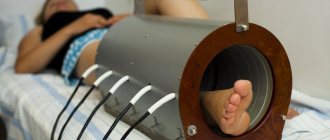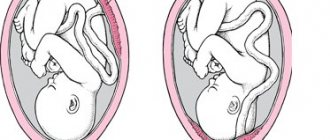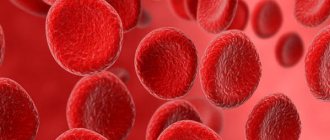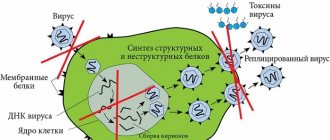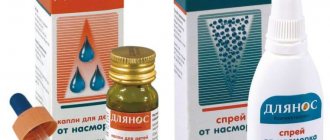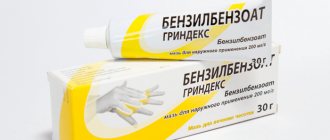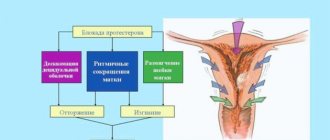Release form, packaging and composition of the drug Clinical-pharmacological group Pharmaco-therapeutic group Pharmacological action Indications for use Method of administration and doses Side effects Contraindications for use Use in children Special instructions Drug interactions
Registration Certificate Holder:
FARMAK, PJSC (Ukraine)
ATX Code:
R01AA07
Active substance:
xylometazoline
Dosage form:
Farmazolin
| The drug is approved for use as an over-the-counter product | Farmazolin | Nasal spray reg. No.: LS-001492 from 04/07/06 - Expired |
Pharmacodynamics and pharmacokinetics
Pharmacodynamics
A sympathomimetic agent that acts only on α-adrenergic receptors .
Farmazolin constricts the blood vessels of the nose, weakening the swelling of the mucous membranes of the nose and its paranasal sinuses, facilitating nasal breathing. Well tolerated by patients with sensitive mucous membranes. Does not suppress mucociliary function.
The moisturizing components of the drug help with irritation and dryness of the nasal mucosa. Farmazolin drops have a balanced pH characteristic of the nasal cavity.
Pharmacokinetics
The action begins a few minutes after instillation and lasts up to 12 hours. When applied locally, the drug is almost not absorbed, and the content of xylometazoline in the blood is so insignificant that it is impossible to determine it using modern methods.
Farmazolin
Manufacturer: FARMAK OJSC (Ukraine)
◊ nasal spray 0.1%: fl. 10 ml, 15 ml or 20 ml. Reg. No.: LS-001492
Clinical and pharmacological group:
Vasoconstrictor drug for topical use in ENT practice
Release form, composition and packaging
| ◊ Nasal spray 0.1% | 1 ml |
| xylometazoline hydrochloride | 1 mg |
10 ml - polyethylene bottles with a dosing device (1) - cardboard packs. 15 ml - polyethylene bottles with a dosing device (1) - cardboard packs. 20 ml - polyethylene bottles with a dosing device (1) - cardboard packs.
Description of the active components of the drug "Xylometazoline"
pharmachologic effect
Vasoconstrictor for local use in ENT practice. Alpha adrenergic agonist. When applied to the mucous membranes, it causes vasoconstriction, as a result of which local hyperemia and swelling are reduced. For rhinitis, it facilitates nasal breathing.
Indications
Acute allergic rhinitis, sinusitis, hay fever, otitis media (to reduce swelling of the nasopharyngeal mucosa), preparing the patient for diagnostic procedures in the nasal passages.
Dosage regimen
Apply topically for 7-14 days. The dose depends on the dosage form used and the age of the patient.
Side effect
With frequent and/or long-term use:
irritation of the mucous membrane, burning, tingling, sneezing, dry nasal mucosa, hypersecretion.
Rarely:
swelling of the nasal mucosa (more often with long-term use), palpitations, heart rhythm disturbances, increased blood pressure, headache, vomiting, sleep disorders, visual disturbances.
With long-term use in high doses:
depressive state.
Contraindications
Angle-closure glaucoma, atrophic rhinitis, arterial hypertension, tachycardia, severe atherosclerosis, hyperthyroidism, surgical interventions on the meninges (history), hypersensitivity to xylometazoline.
Pregnancy and lactation
During pregnancy and lactation, it should be used only after a thorough assessment of the risk-benefit ratio for the mother and fetus; recommended doses should not be exceeded.
Application for children
Xylometazoline should be prescribed with caution to children under 2 years of age (gel - up to 7 years).
special instructions
Should not be used for a long time, for example, for chronic rhinitis. For colds, in cases where crusts form in the nose, it is preferable to administer it in the form of a gel.
Use in pediatrics
Xylometazoline should be prescribed with caution to children under 2 years of age (gel - up to 7 years).
Drug interactions
Incompatible with MAO inhibitors and tricyclic antidepressants.
Drug interactions
Incompatible with MAO inhibitors and tricyclic antidepressants.
Contraindications
- Sensitization to the components of the drug, acute vascular diseases of the heart, glaucoma, hyperthyroidism, transsphenoidal hypophysectomy , a history of surgical operations with exposure of the dura mater of the brain, atrophic rhinitis .
- Combination therapy with MAO inhibitors and a two-week period after stopping their use.
Use during pregnancy and lactation
Officially, Farmazolin is prohibited for use during pregnancy and breastfeeding. The ban is based on the lack of reliable research results. It is unknown what effect the drug may have on the developing body of the unborn child, so experts prefer not to take risks and prescribe vasoconstrictor drugs only when the benefits of their use are higher than the existing risks.
Nasal drops act locally, the active substance practically does not enter the bloodstream, therefore Farmazolin is considered a relatively safe drug that does not have a teratogenic effect on the fetus. But in any case, consult your doctor before using the medicine.
Side effects
- Immune reactions : rash, Quincke's edema , itching .
- Reactions from the visual side: transient visual impairment.
- Reactions from nervous activity: insomnia , headache , lethargy, drowsiness , hallucinations .
- Circulatory reactions: increased blood pressure, tachycardia, arrhythmia.
- Digestive reactions: nausea.
- Reactions from breathing: sneezing, dryness of the mucous membranes of the nose and nasopharynx, nosebleeds, increased swelling of the nasal mucosa after the effect of the drug wears off.
- Reactions from the musculoskeletal system: cramps .
- Local reactions: burning in the area of application.
pharmachologic effect
Xylometazoline stimulates alpha-adrenergic receptors, which causes a reflex narrowing of the blood vessels supplying the structures of the nasal cavity. The drug reduces the unpleasant symptoms of a viral infection, an allergic reaction that occurs upon contact with an allergen (dust, pet hair, pollen). The effect of the product lasts for several hours. The therapeutic effect occurs almost immediately after applying nasal drops to the mucous membrane.
Many ENT diseases occur with severe nasal congestion and the formation of difficult-to-clear mucus, which does not allow air to circulate freely through the nasal passages. As a result, blood circulation in the brain deteriorates. A lack of nutrients leads to increased fatigue, headaches, dizziness and decreased performance. Timely use of vasoconstrictor drugs promotes rapid restoration of well-being and a speedy recovery.
Instructions for use (Method and dosage)
Before administering the product, the instructions for Farmazolin recommend thoroughly cleaning the nasal cavity.
When using a polyethylene bottle, screw the cap as much as possible before the first instillation. In this case, the spike located on its reverse side pierces a hole. Then the cap is unscrewed, removed and, pressing on the body of the bottle, the solution is instilled into the nose.
Farmazolin (children) 0.05%, used at the age of 1-11 years. Farmazolin 0.1%, used from the age of 12 years.
Farmazolin (nasal drops) for children, instructions for use
- Children 1-5 years old are prescribed to instill (under adult supervision) 1-2 drops into both nasal passages up to three times per day.
- Children 6-11 years old are recommended to instill (under adult supervision) 2-3 drops into both nasal passages up to three times per nose.
This form of the drug in the specified age groups is allowed to be used no more than 3 times a day. The duration of treatment depends on the duration of the disease and should not exceed 1 week, unless otherwise prescribed by the doctor.
Farmazolin drops, instructions for use
For persons over 12 years of age, 2-4 drops are recommended in both nasal passages up to three times per day. The duration of treatment depends on the form and course of the disease and should not last more than 10 days in a row.
Overdose
When administered above 0.2 mg/kg body weight, rapid heartbeat, fatigue and increased blood pressure may occur. Rarely, when a severe overdose occurs, periods of excitation and depression of the brain and circulatory system may alternate. Signs of nervous system excitation are emotional agitation, hallucinations and convulsions , and symptoms of nervous system depression are decreased temperature, drowsiness, lethargy and coma . The following symptoms are also likely to occur: changes in pupil size, pallor, sweating , cyanosis, tachycardia , nausea, bradycardia, asystole, arrhythmia , circulatory disorders, decreased blood pressure, pulmonary edema , apnea .
It is advisable to start treatment of a severe overdose (over 1 mg/kg body weight) in the first hour after its occurrence. For the treatment of seizures, it is recommended to use anticonvulsants , and to lower blood pressure - non-selective alpha-blockers . The use of vasoconstrictor drugs is contraindicated. Atropine should be used only in cases of severe bradycardia due to low blood pressure.
Adverse reactions
When the drug is used correctly and the recommended dosage is followed, no adverse reactions occur. Do not use Farmazolin if you are hypersensitive to one or more components of the product or if you have the following contraindications:
- serious disturbances in the functioning of the cardiovascular system;
- glaucoma;
- hyperthyroidism;
- children under 1 year of age;
- atrophic processes in the nasal cavity;
- previous brain surgery;
- the presence of polyps on the mucous membrane;
- visual impairment;
- pregnancy, breastfeeding period;
- hypertension, unstable blood pressure.
Some of the contraindications are not considered absolute: with a properly selected treatment regimen and medical supervision, Farmazolin can be used in short courses until the symptoms of the disease are alleviated and a pronounced therapeutic effect is achieved.
In case of overdose (when administering more than 0.2 mg/kg), the following symptoms may occur:
- cardiopalmus;
- increased blood pressure;
- irritability;
- drowsiness;
- increased fatigue;
- signs of central nervous system disorder;
- seizures;
- sweating;
- dilated pupils;
- tachycardia;
- disruption of the heart muscle.
If one or more symptoms of overdose occur, seek immediate help. The use of alpha-agonists is stopped, and symptomatic therapy is prescribed to lower blood pressure and restore impaired body functions.
special instructions
The drug should be used with caution in patients with coronary insufficiency, high blood pressure, porphyria, diabetes mellitus, prostate hypertrophy , enlarged thyroid gland, pheochromocytoma.
The drug should also be used with caution in persons with sensitivity to sympathomimetics due to the possibility of sleep disturbances and dizziness.
Do not use the drug for a long time and exceed the recommended dosage, as this can lead to the development of atrophy of the nasal mucosa, rhinitis , reverse action after cessation of therapy and addiction to xylometazoline.
In order to prevent infection, each bottle of the product can only be used by one patient.
Special instructions and signs of overdose
If the drug is used too often, the following unwanted side effects may occur:
- dizziness, impaired visual acuity;
- headaches, migraines;
- tachycardia, heart rhythm disturbance;
- insomnia, urge to vomit, attacks of nausea.
Carefully! If you use the drops frequently, without following the indicated dosage, this can lead to the development of a depressive state.
It is also worth studying the drug interactions of the drug. It may not be combined with some medications. This will lead to the development of unwanted side effects and will certainly affect your health.
What to do if unpleasant signs appear:
- Contact your doctor as soon as possible.
- Stop using the drug.
- Take absorbents.
- Drink plenty of water and stay in bed.
What medications should you not take Farmazolin with:
- with tetracyclic antidepressants (problems with blood pressure may occur);
- drops do not combine well with medications that increase the release of adrenaline in the blood;
- calcium antagonists weaken the therapeutic effect of the drug;
- adrenergic agonists can enhance the effect of Farmazolin.
Analogs
Level 4 ATX code matches:
Xymelin Eco
Xymelin
Nazivin
Galazolin
Lazorin
Nazivin Sensitive for children
Otrivin
Naphthyzin
Sanorin
Knoxprey
For the nose
Lazolvan Rino
Afrin
Rhinorus
Eucazoline Aqua
Rinazolin
Grippostad Reno
Xylometazoline
Nazol Advance
Nazol Baby
Brizolin, Grippostad Rino, Galazolin, Dlynos, Doctor Theiss, Influrin, Asterisk NOS, Xylene, Xylobene, Xylometazoline, Xylometazoline bufus, Ximelin, Nosolin, Ximelin Eco, Otrivin, Olint, Tizin xylo, Rinomaris, Rinorus, Rinonorm, Rinostop, Snoop, Sanorin-Xylo, Suprima-NOZ, Espazolin.
Farmazolin price, where to buy
The average price of Farmazolin 0.1% in Russia is close to 82 rubles, and in Ukraine the price of this form of release starts from 12.5 hryvnia.
- Online pharmacies in UkraineUkraine
- Online pharmacies in KazakhstanKazakhstan
Pharmacy24
- Farmazolin N 0.1% 15 ml nasal spray PAT "Farmak", Ukraine
30 UAH. order - Farmazolin 0.05% 10ml nasal drops PAT "Farmak", Ukraine
20 UAH order
- Farmazolin 0.1% 10 ml nasal drops PAT "Farmak", Ukraine
23 UAH order
- Farmazolin 1mg/ml 10ml nasal spray mint with eucalyptus
39 UAH order
PaniPharmacy
- Farmazolin liquid Farmazolin nasal drops 0.05% 10ml Ukraine, Farmak OJSC
22 UAH order
- Farmazolin liquid Farmazolin nasal drops 0.1% 10ml Ukraine, Farmak OJSC
23 UAH order
- Farmazolin N liquid Farmazolin N spray called. 0.1% 15ml Ukraine, Farmak OJSC
31 UAH order
- Farmazolin spray mint/eucalyptus 1 mg/ml fl 10 ml No. 1 Ukraine, Farmak
43 UAH order
show more


